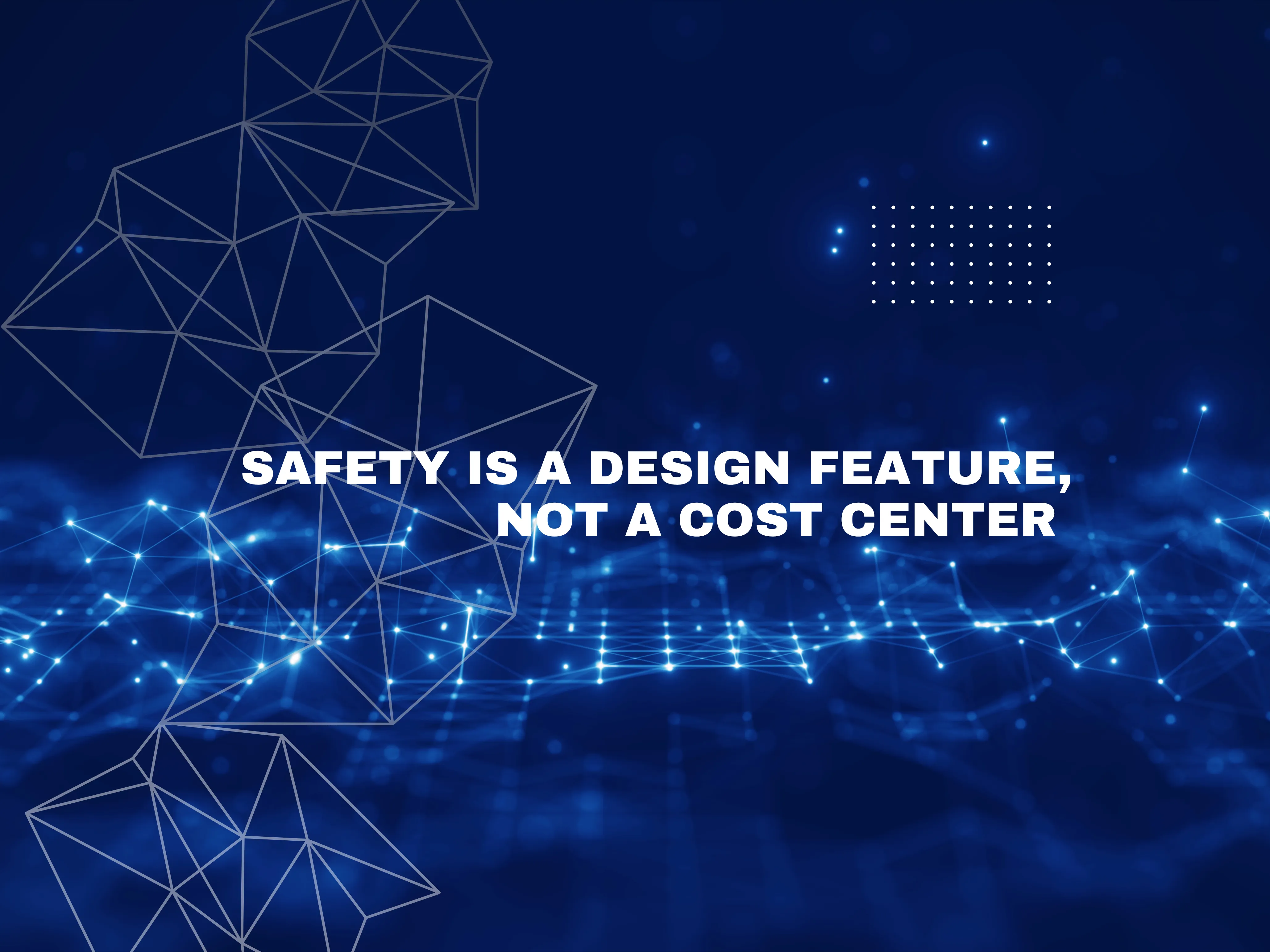Have you ever wondered why manufacturers of advanced robotics spend millions to ensure their products are safe?
Would you board a self-driving shuttle that wasn’t safety certified? Probably not—and for good reason.
As technology evolves at breakneck speed, safety is no longer just a regulatory hurdle. It’s a non-negotiable expectation woven into the very fabric of what customers, regulators, and end users demand. In fields like robotics, autonomous systems, and industrial automation, safety isn’t a side concern. It’s part of the product.
Yet many organizations still view safety as an overhead expense or something to be addressed late in development. That mindset isn’t just outdated—it’s risky.
Functional safety goes far beyond ticking a compliance box. It’s a core design feature that builds trust, reduces risk, and ultimately makes products stronger. Let’s explore why.
Why Safety is a Product Attribute
When someone buys a car, they aren’t just paying for four wheels and an engine. They’re buying peace of mind—trusting the brakes will engage, airbags will deploy, and electronics won’t fail at highway speeds.
The same is true for robotics, medical devices, and industrial systems. Buyers expect safety to be built in, not bolted on later.
This shift reframes safety from a regulatory exercise to a critical product attribute—like battery life, range of motion, or software speed. It must be factored in from the earliest concept phase, influence architecture, and be validated through every stage of development.
When Safety is an Afterthought: Real-World Consequences
Consider the tragic case of the Uber self-driving car fatality in 2018. An autonomous vehicle struck and killed a pedestrian in Arizona. Investigations revealed multiple contributing factors, but one stood out: the vehicle’s perception system detected the pedestrian but failed to classify them as a threat in time to brake.
The aftermath was swift and severe—public trust plummeted, regulatory scrutiny intensified, testing programs were paused, and Uber faced lasting reputational damage.
It’s a sobering lesson: even without malicious intent or catastrophic hardware failures, insufficient safety planning can be devastating—for people, developers, and the future of the technology.
This is a wake-up call not only for autonomous vehicles, but for any company building safety-critical systems—whether warehouse robots, surgical devices, or drone delivery platforms.
Safety Builds Trust—and Opens Markets
Safety-certified products don’t just avoid accidents. They gain a competitive edge.
Buyers in aerospace, healthcare, and automotive demand functional safety certification before even considering a product.
Regulators increasingly require compliance with standards like IEC 61508, ISO 26262, or ISO 13849.
Corporate procurement teams are trained to steer clear of vendors who can’t prove a safety lifecycle approach.
Investing in functional safety processes and third-party certification helps companies unlock new markets, reduce liability, and build lasting customer relationships. In many industries, safety isn’t a differentiator—it’s the price of entry.
Integrating Safety into the Development Lifecycle
Treating safety as a design feature means embedding it throughout the entire process:
Concept Phase:
Start with hazard and risk analysis. Understand what could go wrong and determine how to reduce risks to acceptable levels.
Requirements & Architecture:
Define safety functions and allocate them to system components with clear targets, such as Safety Integrity Levels (SILs).
Design & Implementation:
Apply fail-safe design, redundancy, diagnostics, and defensive programming to build systems that remain safe even if components fail.
Verification & Validation:
Rigorously test to ensure the system meets safety requirements under all realistic operating conditions.
Maintenance & Updates:
Maintain safety through robust documentation, training, update strategies, and field monitoring.
This is the safety lifecycle. Following it isn’t about paperwork—it’s about building systems that earn trust.
Safety Culture Starts at the Top
None of this works without leadership buy-in.
When leadership treats safety as a cost to be minimized, teams feel pressure to cut corners. But when leadership sees safety as integral to product excellence, engineers are empowered to raise concerns, follow best practices, and prioritize risk reduction—even when it adds complexity or time.
Creating a culture where safety concerns are heard and respected is the single most powerful driver of real-world safety success.
The Investment Pays Off
Yes, safety takes time and adds engineering complexity. So does encryption, user experience, or environmental performance—yet those are rarely considered optional.
When companies treat safety the same way, they protect lives, reduce liability, strengthen their brand, and—most importantly—earn the trust of their customers.
Build Safety In from Day One
In today’s world, safety isn’t a regulatory speed bump or a line item on a checklist. It’s a design decision with profound consequences—and significant rewards.
The real question isn’t can we afford to invest in safety? It’s can we afford not to?
CSA is here to help you build safety in from the start, guiding your team through the full safety lifecycle with clarity and confidence.
